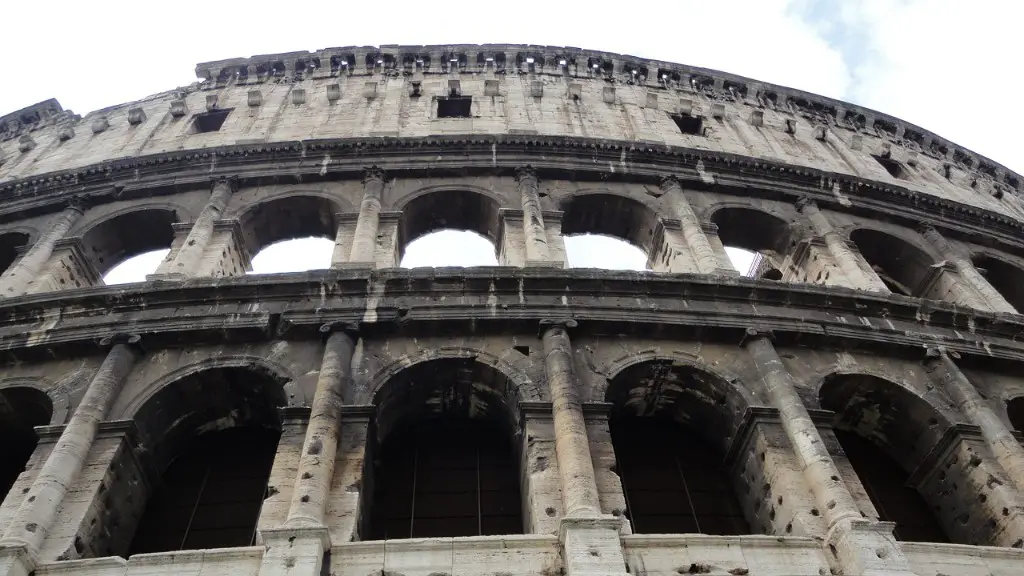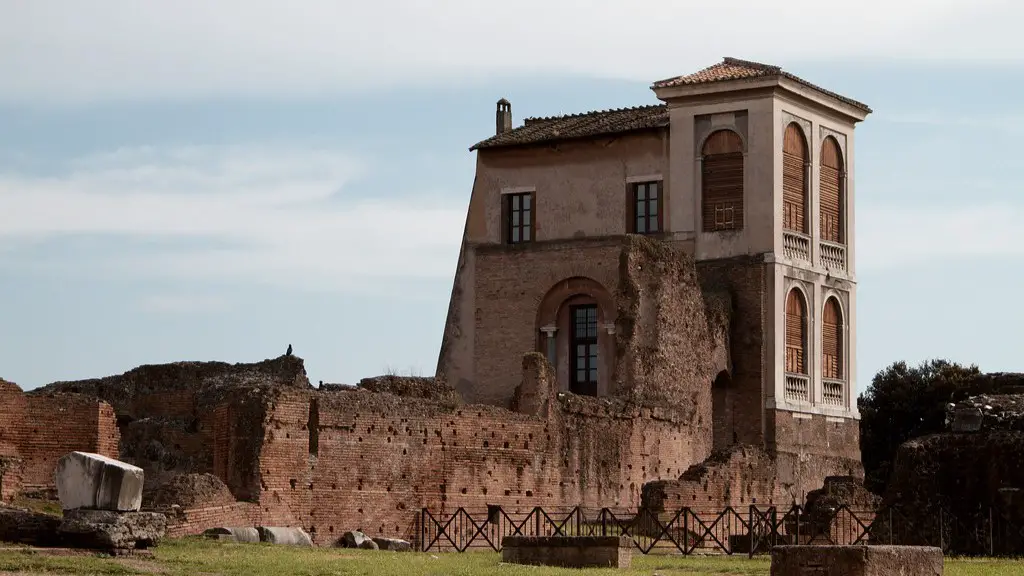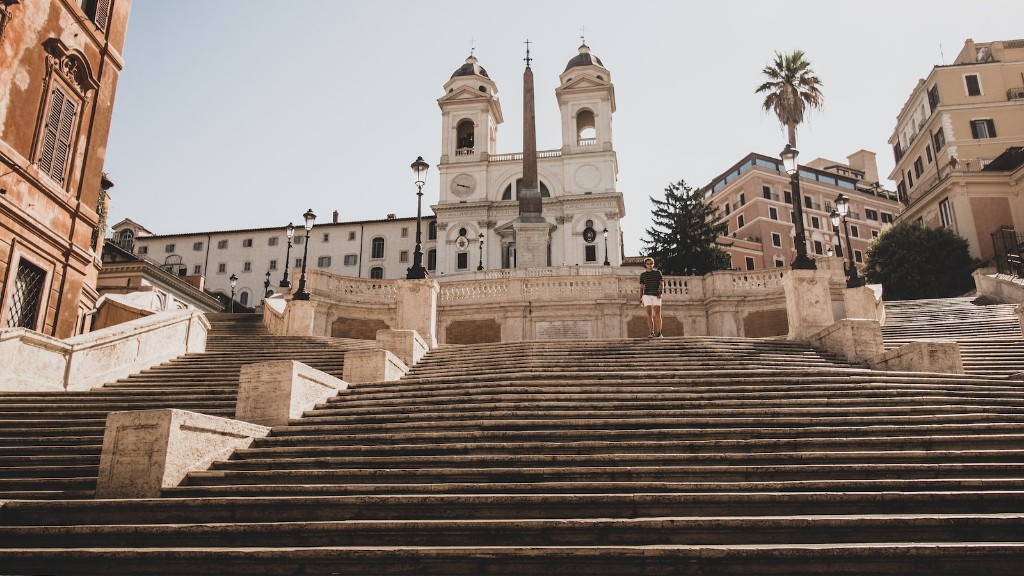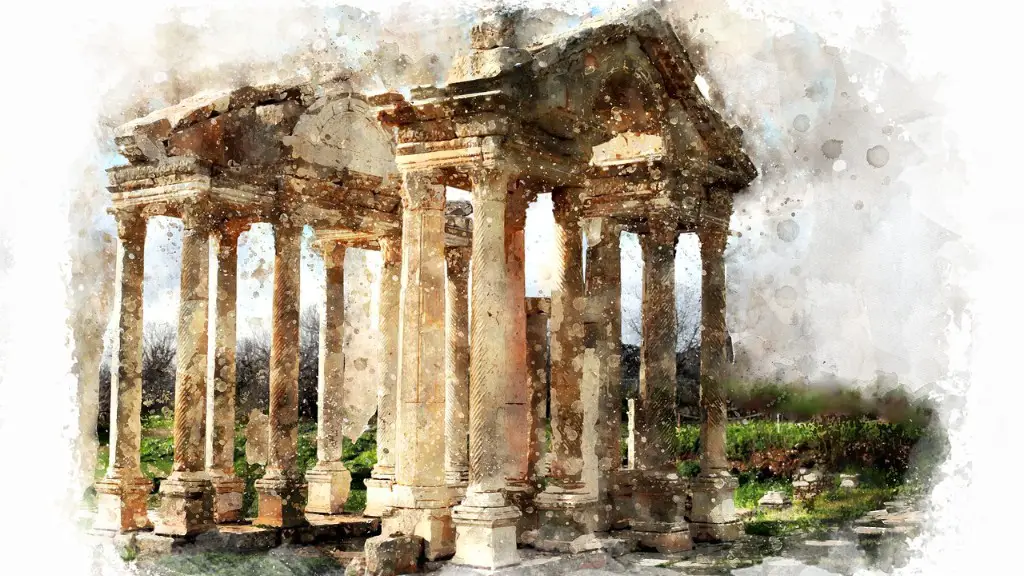If you could take a step back in time and explore the bustling streets of ancient Rome, you would be amazed at how different it would look and feel compared to modern day Italy. The buildings would be shorter, with many more shops and businesses. The streets would be narrower, and more crowded with people and animals. And the air would be thick with the smell of smoke, sweat, and spices.
It is difficult to say exactly what ancient Rome would look like, as it was a large and complex city with many different parts. However, some of the most iconic and well-known features of Rome would likely include the Colosseum, the Forum, and the Pantheon.
What did the average ancient Roman look like?
The ancient Romans were a people of Mediterranean descent, with dark hair and eyes. They typically had a tan or olive skin complexion. Men were clean-shaven and had short hair, while women had longer hair that was often styled in various ways.
The Roman elite lived a life of luxury and extravagance. Their houses were often located on hills outside of Rome, providing them with a beautiful view and a peaceful setting. They were surrounded by servants and slaves who tended to their every need, and they enjoyed a life of ease and comfort.
What race were Romans
The early Romans were mainly composed of Latin-speaking Italic people, known as the Latins. The Latins were a people with a marked Mediterranean character, related to other neighbouring Italic peoples, such as the Falisci.
It is interesting to note that even the average height of the ancient Romans was shorter than today’s Romans. Around 5’5″, the average height was shorter than today’s average height of around 5’9″. This is likely due to the different lifestyles and diets that the two groups of people have. Today, we have access to a variety of foods and supplements that help us to grow taller and stronger. In ancient times, however, the diet was much more basic and lacking in the nutrients needed for proper growth.
Were ancient Romans Caucasian?
There is very little evidence to suggest what the skin pigmentation of ancient Romans was. This absence of evidence has allowed the assumption that most prominent Romans were, in our terms, White. However, it is important to note that skin pigmentation was not important to the ancient Romans, and so our sources hardly ever mention it. This makes it difficult to associate particular ancients with modern racial categories.
The average height of a male Roman was most likely between 5′4″ and 5′7″. This is based on various sources that report different heights. One source says that the average male in the military was 5′6″, while another source says 5′7″. It is likely that they were very strong for their heights, considering they had to march long distances with heavy armor and supplies.
What time did Romans wake up?
The typical day for a Roman began before dawn and ended long after sunset. Work would begin early in the morning and continue until noon, when most people would take a break to enjoy a leisurely lunch. The afternoons would be spent pursuing activities like swimming and exercising, and sundown would mark the beginning of an evening spent socializing with friends and family. Dinner parties would often last well into the night, making for a very long day by modern standards.
Longevity has gradually increased over the years, with life expectancy at birth rising from 25 years during the Roman Empire to 33 years during the Middle Ages, and then up to 55 years in the early 1900s. This increase is due to improvements in medical care and living conditions, as well as other factors such as diet and exercise. Even though life expectancy has increased, it is still important to live a healthy lifestyle in order to enjoy a long and prosperous life.
What did Romans sleep on
Wealthy citizens of ancient Rome slept on raised beds made of metal, with woven metal supports to hold the feather or straw-stuffed mattress. Less-wealthy people had similar beds made from wood, with wool strings holding up the mattress. This was likely due to the fact that metal was a more expensive and therefore less accessible material for the average person. As a result, those who could afford it had an advantage in terms of comfort and luxury.
It is fascinating to think that there are Italians alive today who are directly descended from people who lived in Italy during the Roman era. However, it is important to keep in mind that most Italians will have at least some admixture from other European peoples too. This is a reminder of how interconnected our world is and how we all share a common humanity.
What DNA were the Romans?
The Roman Empire was one of the largest empires in history. At its height, it included the entire Mediterranean region, as well as parts of the Middle East and Europe. A new DNA study has revealed that the people of ancient Rome were genetically similar to the populations of the Eastern Mediterranean and Middle East. The study did not find any evidence of significant genetic admixture from other regions of the world. This is consistent with the Roman Empire’s origins in the Mediterranean region.
Latin was originally spoken by small groups of people living along the lower Tiber River. With the increase of Roman political power, it spread throughout Italy and then to most of western and southern Europe, as well as the central and western Mediterranean coastal regions of Africa.
How did Roman get so big
Rome was able to gain its empire by extending citizenship to many of the conquered people. The military expansion drove economic development and brought enslaved people and loot back to Rome. This transformation of the city of Rome and Roman culture was a key factor in their success.
The Roman Army of ancient Rome was so powerful because of its Training and Equipment which was advanced for its day. In order to be considered fit enough to be a legionnaire (the name given to a Roman soldier), one had to be able to march 20 miles in 5 hours with the full armour and kit weighing 45lbs. This strict fitness regime and their excellent equipment meant that the Roman Army was a formidable force on the battlefield.
How heavy was the average Roman?
The average gladiator was about 5-foot-7 to 5-foot-8, which was two inches taller than the average man of the time. They were also quite heavy, weighing in at around 170 to 175 pounds. This was considered quite large for the time period. They were very muscular, no doubt due to all the training and fighting they did.
Severus was a Roman Emperor who ruled from 193-211. He was the first African Emperor of Rome and is known for expanding the border of the empire and ushering in a period of transformation. He also founded a dynasty, which ruled for nearly two hundred years.
Conclusion
If you were to take a trip back in time to ancient Rome, you would be transported to a city full of marble temples, grandiose public squares, and imposing government buildings. The streets would be lined with shops and homes, and the air would be full of the sound of people chatting and going about their daily lives. You would also see a lot of animals, as they were often used for transportation or as working animals.
If you were to take a trip back in time to visit ancient Rome, you would be amazed at how different it would look! The buildings would be much more simplistic, made of stone and brick instead of the towering marble structures that exist today. There would be no cars or buses clogging up the streets, and the only horses you would see would be pulling carts. The ancient Romans were a fascinating people, and it would be a truly unique experience to explore their world!




